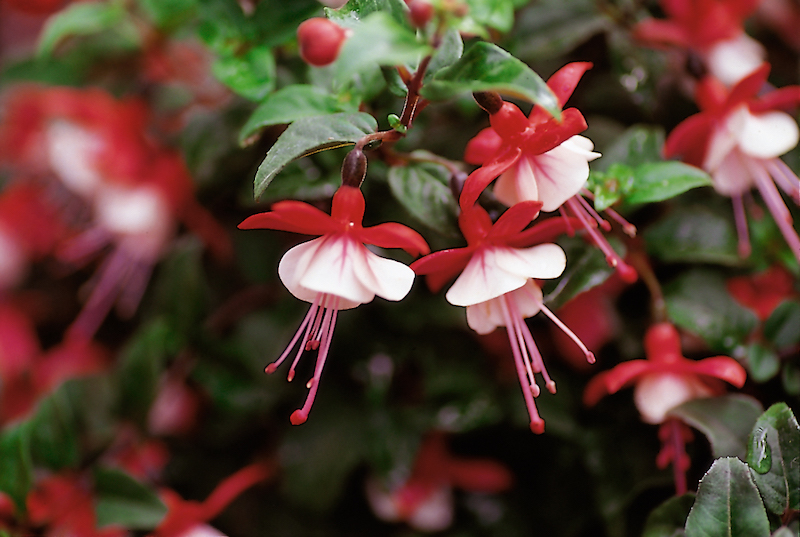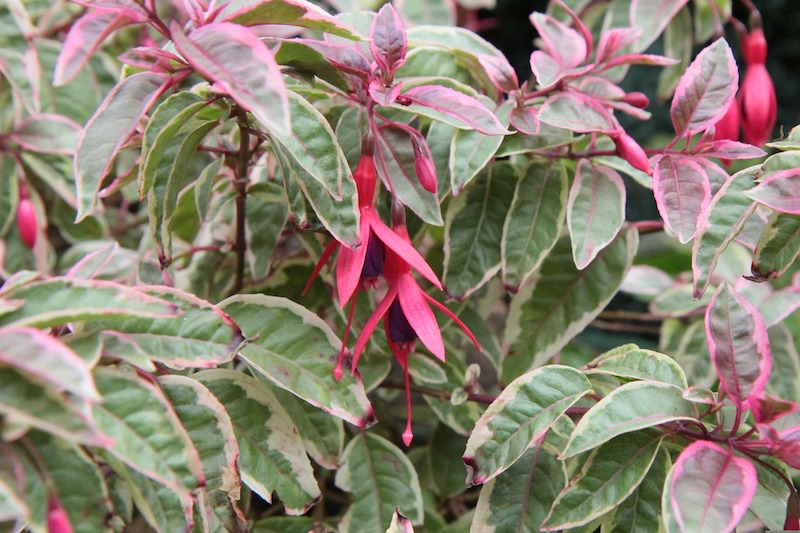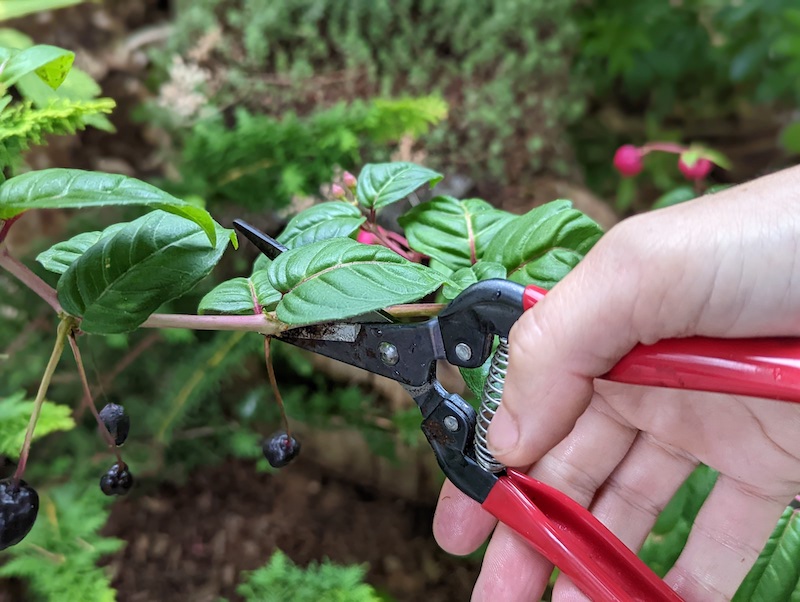Fuchsia is most often grown as an annual plant even though there are varieties that are cold hardy in USDA zones 6-10. Typically Fuchsia is grown for hanging baskets or as part of a seasonal mixed container planting. When fall arrives, and the first frost kills off the foliage, plants are often composted or thrown in the municipal green waste. With minimal maintenance, even in the colder zones of 2-5, Fuchsia can be overwintered and encouraged to grow the following spring.

Protecting Fuchsia in Winter
Fuchsia species, such as F. magellanica, are incredibly hardy in zones 6-10 and are grown as short-lived shrubs. They need minimal protection in winter and are pruned in the early spring when new growth begins. These perennial types can be mulched at the base of the plant to add insulation for the root system.
Fuchsia grown as an annual should be moved inside for the winter. Place them in a frost-free and dark area such as a cool basement, a garage that does not freeze, or an unheated greenhouse (for zones 6-8). Alternatively, place the Fuchsia in a bright sunny spot in the house where it can be treated as a houseplant for the winter.

Cutting Back Fuchsia For Winter
Fuchsias growing in the garden are best pruned in the early spring to remove damage from the winter. The top growth protects and insulates the plant. Cut back perennial types hard in the spring to remove dead branches. Annual varieties should be cut back by half before they are stored for the winter. When they are brought out in the spring, the dead woody stems should be cut back to about 4-6 inches tall, near where new shoots are emerging. Plants that will be grown as houseplants will need to be cut back by one-third in the fall. Cut these plants back hard to 4-6 inches tall when the new growth resumes in the spring.

Fuchsia Winter Care in Pots
Fuchsias grown in pots are easily moved indoors for overwintering. If there is a sunny enough spot in the house, grow these tender perennials as houseplants. Putting the pots in a cool dark place such as a basement, unused room, or closet is also an excellent way to overwinter a plant if the house has no sunny spots. The plants will go into dormancy and will regrow in the spring when the temperatures rise.
Fertilizing of Fuchsia needs to taper off in late August. This will help the plant harden off and prepare for dormancy. Make sure to move the plants to a sheltered location while the nights are still around 50 degrees F. Waiting until it gets colder will risk the plants being frozen in a surprise frost. One frost is all it takes to kill off most hybrid Fuchsias.
Watering Fuchsia in Winter
Water pot-grown Fuchsia less frequently as winter approaches. The top 1-2 inches of soil can be left to dry out in between waterings. Fuchsia growing in the ground will need supplemental watering during dry weather until the temperatures are below 50 F.
Growing Fuchsia Indoors
Once the plants are brought inside for the winter, the watering frequency should be reduced. Plants that will be kept in the dark need only a monthly check for watering. Water sparingly but thoroughly. Dry soil is fine, although it should not be so dry that it pulls away from the side of the pot. The top 1-2 inches of soil can dry out in between waterings. Plants left to grow in a sunny location in the house will need checking for moisture levels once a week. No fertilizing will be necessary until new growth starts in the spring.
Steps To Care For Fuchsia in Winter
Even though Fuchsia is often grown as an annual, it can be successfully overwintered and regrown the following year.
Step 1 - Hardy Fuchsia needs little protection during the winter. Leave top growth as insulation through the winter and prune out any damaged branches in the spring as the new growth starts.
Step 2 - Annual hybrid Fuchsia needs less watering in the early fall before temperatures reach 50 F overnight.
Step 3 - Bring potted plants inside to overwinter when the nighttime temperature drops below 50 F.
Step 4 - Place the pots in a cool, dark location to stay dormant until spring.
Step 5 - Place Fuchsia houseplants in a spot that receives bright but indirect sun.
 |
Author Robbin Small - Published 9-16-2022 |
